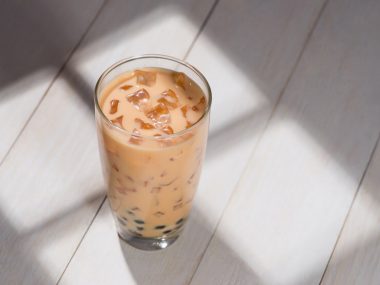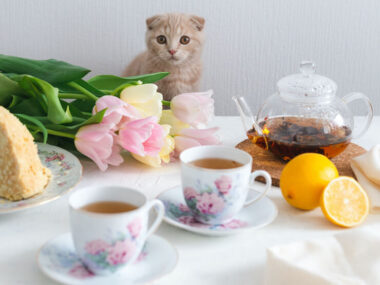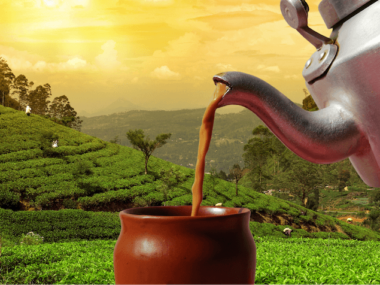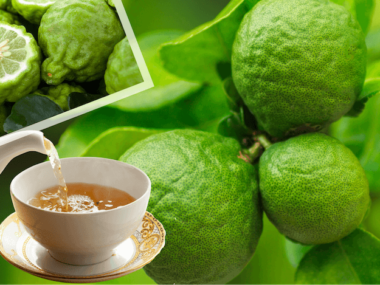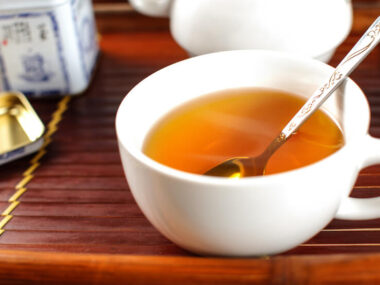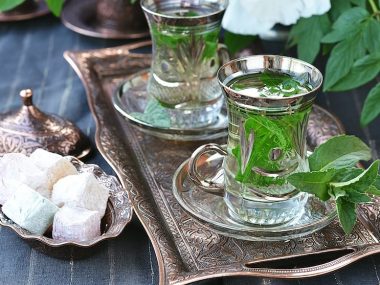There’s nothing “flowery” about this tea, so how did it end up with an implied floral name? That and a few other interesting things about White Peony tea are something tea lovers don’t want to miss!
Table of Contents
What Is White Peony Tea?
White Peony tea is one of five true teas that all come from one plant (Camellia sinensis.) Its pale color is deceiving and fools many into assuming it’s a weak, diluted tea. Just the opposite because this tea is one of two (the other being Silver Needle) of the purest teas in the world.
White Peony tea is also referred to as “Bai Mu Dan” (which means “White Peony” in Chinese.) This reference term is of great importance within the tea industry, which we will cover further down. This tea is considered rare and perhaps the best tea anyone will ever experience.
What Kind Of Tea Is White Peony?
The name of this tea is a bit misleading, for it’s not made from white peonies. It’s unknown just how the tea got its name. There are various claims that it resembles peony flower petals once it unfurls in the water, while others say “White Peony” is symbolic of a delicate pureness (hence “white” in its name.)
So, is White Peony tea the same as white tea since it has “white” in its name? It belongs to the white tea group. White teas are the least processed group of all true teas (black, green, oolong, yellow.) The lesser a tea is processed, the purer it is.
High-quality white tea typically comes in loose-leaf form. It may also come in a compressed form called cakes. These cakes are similar looking to puerh tea cakes. Various types of white tea, such as White Peony, are compressed into round or small square forms. These tea cakes are often purchased by tea drinkers to store and allow them to age. A genuine White Peony aged cake can cost hundreds of dollars.
Beware Of Counterfeit White Peony Tea
White tea is considered rare because of its limited batches. A growing number of sellers are passing off fake White Peony tea as the real deal when it may be some other tea or a tea with minimal amounts of white tea blended in.
Because of this, be sure to purchase your White Peony tea from reputable tea retailers or from the tea estate itself. Avoid online sites like eBay, Facebook Marketplace, and Craigslist. These counterfeiters have even managed to infiltrate Amazon.com.
Where Does White Peony Tea Come From?
White tea is typically produced in the Fujian Province in China in or near Fuding. Fuding is considered to be the epicenter of China’s white tea. Some tea estates growing this same tea are scattered in the Zheng area in northern Fujian Province. A handful of tea producers in the Himalayan region also cultivate and process White Peony.
White Peony tea may have variations in its name because of where it’s produced. For example, if it’s produced in Fuding, it may be marketed as Fuding Bai Mu Dan. Likewise, a different tea estate in the Himalayas in the Darjeeling region may market it as Bai Mu Dan Darjeeling White Peony.
How Is White Peony Tea Harvested And Processed?
During flushes (harvests,) tea pickers selectively pluck only the bud and 1-2 leaves. Silver Needle is the purest tea of all true teas (White Peony is next.) To give you an idea of why Silver Needle is top dog, tea pluckers only pick the bud to make this Silver Needle. The bud is the most tender and sweetest part of a tea plant.
The tea pickers then take the harvested tea back to a building where it will be allowed to wither and dry. Unlike other true teas (black, green, oolong, yellow,) White Peony does not undergo further processing such as roasting, rolling, shaking, etc.
The goal of producing a superb white tea is to handle it as little as possible, and when tea producers do handle it, great care is used to preserve the integrity of the tea bud and leaves.
Once the White Peony tea dries, it takes on a grayish, brittle-like appearance.
During packaging, further care is used to prevent damage to the tea. Tea traders grade White Peony based on several variables.
Grading White Peony Tea
Here you’ll understand why White Peony tea is referred to as “Bai Mu Dan.” Tea traders grade white teas according to whether buds, leaves or a combination of the two are picked. Although white teas are graded highest to lowest, the lowest is still a high-quality tea among true teas.
Highest Quality Grade: Bai Hao Yin Zhen
- Known as Silver Needle tea
- Sweetest
- Bud only
High-Quality Grade: Bai Mu Dan
- Known as White Peony tea
- Sweet
- 1 bud, 1-2 leaves
Low-Quality Grade: Gong Mei
- Known as Gong Mei white tea
- Somewhat astringent
- 1 bud, 2 leaves
Lowest Quality Grade: Shou Mei
- Known as Shou Mei white tea
- Most astringent
- 1 bud, 3+ leaves
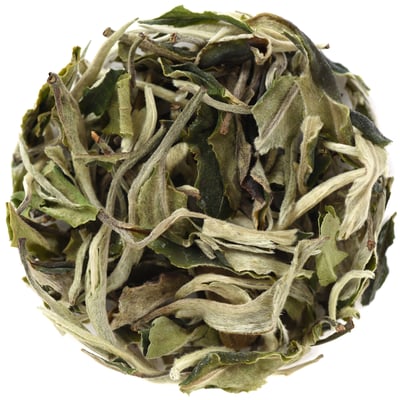
What Does White Peony Tea Taste Like?
The first noticeable taste attribute the palate experiences is a sweet, fruity essence. The tea is smooth with a delicate crisp finish. White Peony tea is a tea that reminds you of classic vintage meets modern minimalism.
Does White Peony Tea Have Caffeine?
Any true tea (including White Peony) can have as much as 40 mg of caffeine in a six-ounce cup.
White Peony tea is documented in Food Science and Biotechnology as having increasing amounts of caffeine correlating to brewing temperatures. At 80 degrees (C,) the tea yields a lower level of caffeine compared to a brew at 100 degrees (C.)
There’s about a 36% increase in caffeine due to an increase of 20 degrees (C.) The hotter the water, the longer the brew, the higher the caffeine will be.
White Peony Tea Benefits
White tea provides the highest benefits of any true tea (black, green, oolong, yellow, white) because of how pure it is. Anytime a tea goes through processing, beneficial constituent degradation begins to occur. The more processed a tea is, the fewer benefits it provides.
What Is White Peony Tea Good For?
A research study entitled “Comparison of the Main Compounds in Fuding White Tea Infusions From Various Tea Types” highlights the benefits of white tea. Because white tea undergoes little to no processing, the beneficial constituents are preserved, contributing to the tea’s overall quality in taste.
White tea contains the highest bioactive concentrations that make the tea a potent antioxidant, antibacterial, and anti-inflammatory. It also exhibits antidepressant, antidiabetic and antihypertensive bioactivity.
Tea drinkers with conditions such as arthritis, inflammatory bowel disease, irritable bowel syndrome, obesity, diabetes, depression, infections, and high blood pressure may benefit from white tea consumption (providing their doctor clears them to drink tea.)
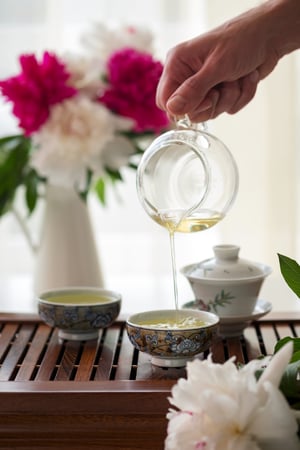
How Do You Make White Peony Tea?
White Peony tea is a tea that should never be “cooked to death” by adding boiling water. To achieve the perfect, most beneficial, best tasting cup of this tea, it’s important to brew it at the right temperature. Steeping time is also crucial.
Interestingly, the Journal of Food Composition and Analysis notes that the perfect way to brew white tea is through cold infusion (room temperature water brew.) The water and tea leaves interact so that the water extracts optimal phenols from the tea leaves.
Cold Brew Method
Ingredients
- 2 cups of cold water
- 2 teaspoons of loose-leaf White Peony tea
Directions
- Place the loose-leaf tea into a tea infuser.
- Pour the water into a teapot.
- Drop the infuser into the teapot.
- Place the lid onto the container.
- Place the teapot into the refrigerator for 12 hours.
- Remove from the refrigerator.
- Remove the tea infuser.
- Pour the tea into a tea glass filled with ice, and enjoy!
Traditional Hot Brew Method
Not all tea drinkers like iced tea, so we’ve included a hot brew method for our hot tea readers.
Ingredients
- 2 cups of water
- 2 teaspoons of loose-leaf White Peony tea
Directions
- Heat the water to 176-212 degrees (F) (80-100 degrees C.)
- Place the loose-leaf tea into a tea infuser.
- Pour the hot water into a teapot.
- Drop the tea infuser into the teapot.
- Cover and all the tea to steep for 3 minutes.
- Remove the cover and the tea infuser.
- Pour the tea into a teacup and enjoy!
A Diamond In A Teacup
White Peony is one of those teas that, once you try it, you’ll want more. Any teacup filled with this tea shines bright with its caressing aroma and soothing taste. Other teas pale in comparison once you take that first sip.

